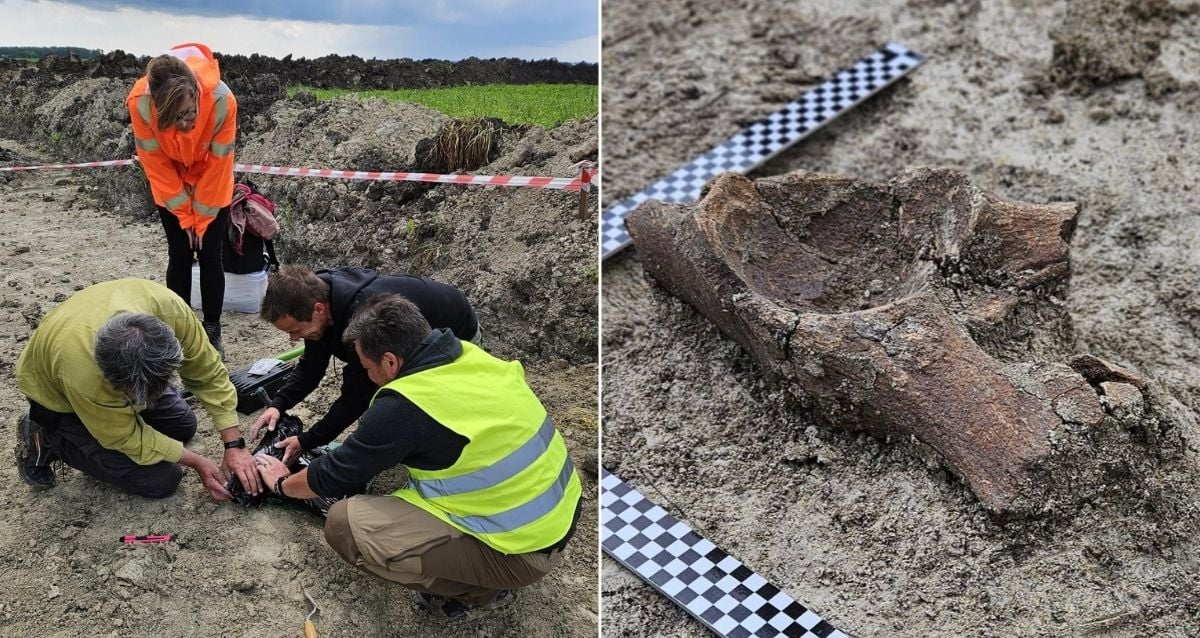Unearthed in Poland: Ancient Mammoth Bones Disrupt Massive Highway Project—What Secrets Do They Hold?
The Mammoth Remains Unearthed During The Construction Of A Highway
As reported by Notes From Poland, Rafał Niedźwiadek from the Institute of Archaeology at UMCS spoke with local TVN24 about the rarity of this discovery. He went on to say that further work is required to find the remains of “the people who hunted the mammoth.”
Researchers have so far dated the tusk and pelvis to the Pleistocene era, between 2.6 million and 11,700 years ago. This period is more commonly known as the Ice Age due to the continental glaciers that covered much of the world, including Poland.
During the Ice Age, mammoths roamed the steppe, a vast, cold grassland stretching from Europe across Asia and into the Americas. They stood between nine and 12 feet tall on average and weighed up to seven tons (14,000 pounds).

Institute of Archaeology at Maria Curie-Skłodowska University via FacebookArchaeologists at the excavation site.
Mammoths had long, curved tusks, a dense fleece of guard hairs and underfur, a layer of fat, short ears, and a tail — all suited for surviving the extreme cold. They were herbivores and grazed primarily on grasses, sedges, and shrubs, using their tusks to sweep snow away.
They coexisted with humans and other predators like wolves and saber-toothed cats, which meant they were regularly hunted for meat and their fur and bones. Other sites from the same period have revealed tools made from mammoth bones, indicating part of the reason they were highly sought after. This hunting, along with massive climate shifts, ultimately led to the extinction of the mammoth.













